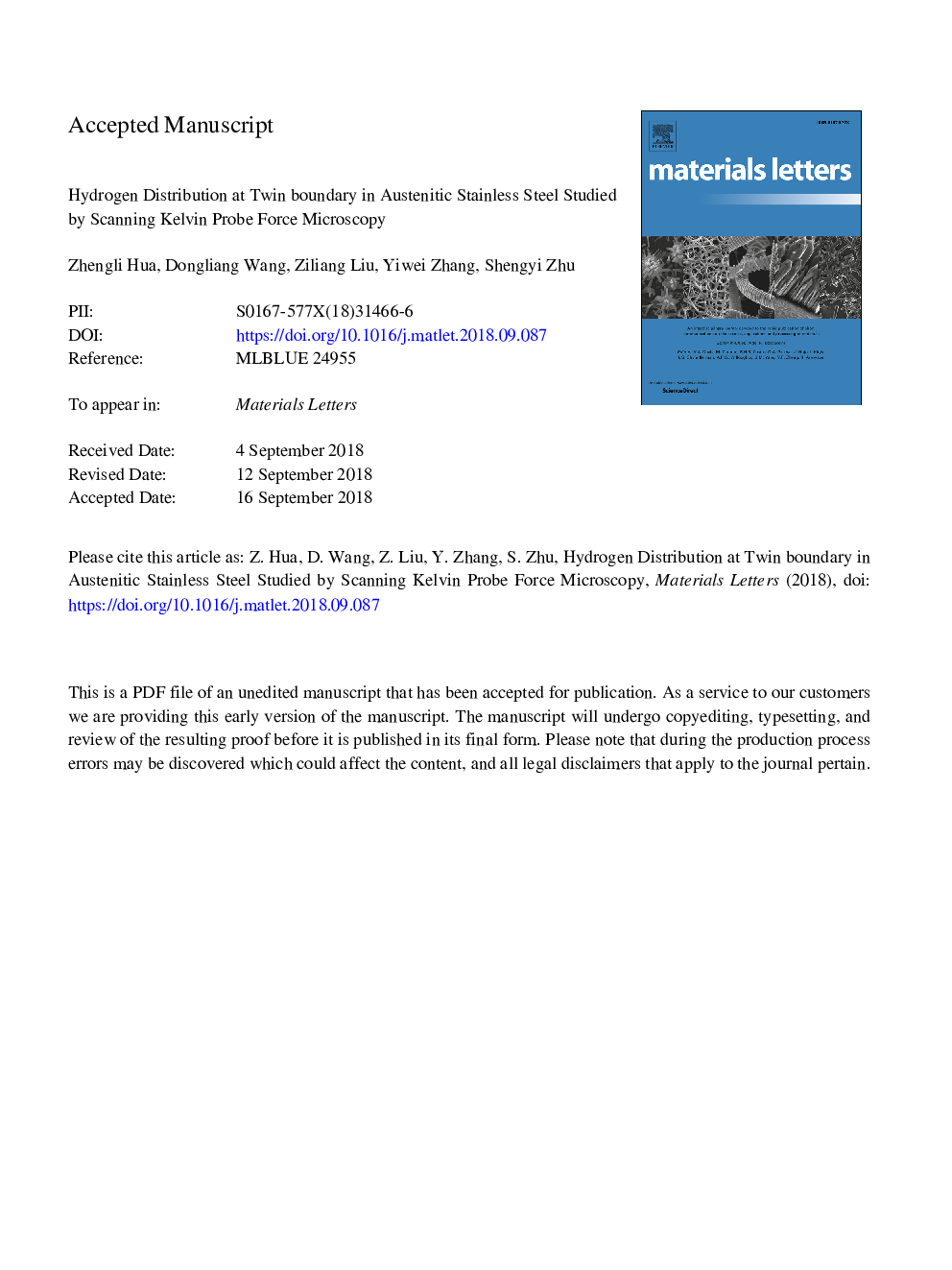| Article ID | Journal | Published Year | Pages | File Type |
|---|---|---|---|---|
| 11026568 | Materials Letters | 2019 | 10 Pages |
Abstract
Twin boundary (TB) separation is usually observed on the fracture surface of austenitic stainless steels (γ-SS) under the influence of hydrogen. However, previous studies fell short in determining the hydrogen distribution and diffusion behavior at the TB. Scanning Kelvin probe force microscopy (SKPFM) is used to investigate the hydrogen distribution at TB in thermally hydrogen-precharged γ-SS. It is found that there are many martensite (αâ²) at TBs in the material. TBs with αⲠprovide fast paths for hydrogen diffusion and some hydrogen is trapped at these areas, which is proposed to be one of the reasons for the TB separation. In contrast, no clear acceleration of hydrogen diffusion and trapping of hydrogen are found at TBs without αâ².
Related Topics
Physical Sciences and Engineering
Materials Science
Nanotechnology
Authors
Zhengli Hua, Dongliang Wang, Ziliang Liu, Yiwei Zhang, Shengyi Zhu,
